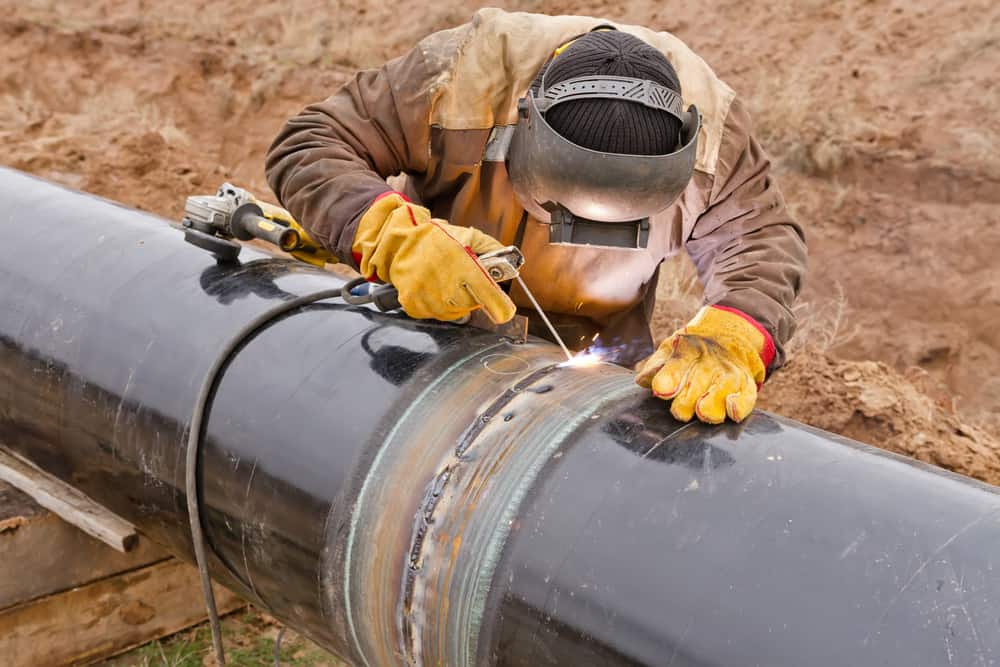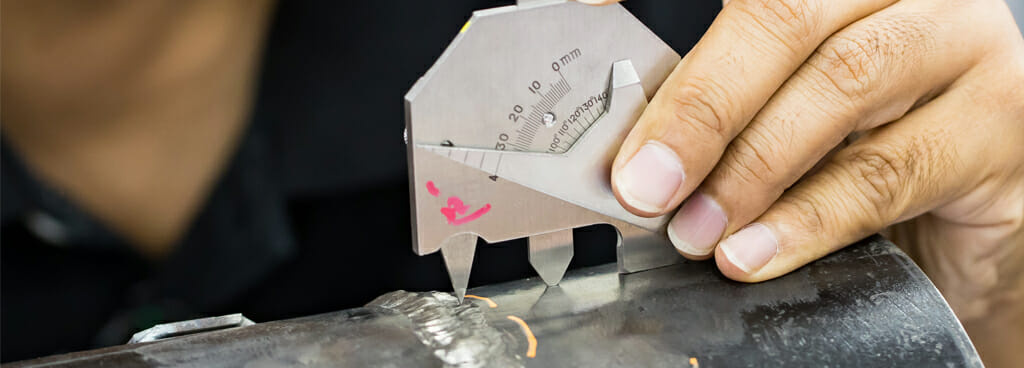Dependable Houston Welding Inspection for Compliance and Safety Criteria
Dependable Houston Welding Inspection for Compliance and Safety Criteria
Blog Article
A Comprehensive Overview to Recognizing How Welding Assessment Functions: Strategies, Standards, and Finest Practices for High Quality Assurance in Metal Fabrication
Comprehending the complexities of welding examination is critical for preserving the honesty of steel manufacture. Various methods, such as visual and ultrasonic testing, play a crucial duty in recognizing prospective imperfections, while adherence to established standards ensures compliance and sturdiness. Implementing finest methods can dramatically boost high quality guarantee procedures. However, the landscape of welding inspection is not without its obstacles. What complications occur in the area, and exactly how can these be successfully minimized? Exploring these elements reveals the deepness of this vital technique.
Value of Welding Assessment
Although welding is a vital procedure in various markets, its honesty straight influences the safety and security and efficiency of frameworks and components. Reliable welding examination is necessary for determining issues that might compromise the high quality and resilience of bonded joints. This procedure ensures adherence to established requirements and specifications, which are important for preserving architectural honesty and functional reliability.
Welding examination serves several objectives, consisting of verifying that the welding procedure has actually been implemented properly, assessing the quality of products used, and verifying that the ended up product fulfills regulatory and sector requirements (Houston Welding Inspection). With extensive inspection, prospective concerns such as porosity, splits, and incomplete fusion can be discovered early, minimizing and avoiding costly repairs security threats
Furthermore, consistent welding evaluations foster self-confidence amongst stakeholders, consisting of engineers, customers, and regulatory bodies, by showing a dedication to top quality assurance. The relevance of welding inspection can not be overemphasized; it is essential not only for compliance with lawful needs however also for boosting the general performance of welded frameworks. Ultimately, a durable welding examination program is a positive action that safeguards against failings, guaranteeing the durability and integrity of bonded elements in their designated applications.
Usual Welding Examination Methods

Aesthetic examination is the initial line of defense, permitting assessors to identify surface area defects such as cracks, undercuts, or incomplete blend. Radiographic screening utilizes X-rays or gamma rays to reveal inner imperfections, making it suitable for intricate welds. Ultrasonic screening employs high-frequency audio waves to detect subsurface issues, giving specific measurements of weld integrity.
Magnetic particle screening is effective for ferromagnetic materials, highlighting surface and near-surface interruptions when particles are related to an electromagnetic field. On the other hand, dye penetrant screening uses a liquid color to reveal surface-breaking problems, making sure that also the tiniest imperfections are discovered.
Each method has its strengths and limitations, commonly necessitating a combination of techniques for thorough assessment - Houston Welding Inspection. By using these inspection strategies, quality control in metal manufacture is useful content achieved, making certain that welded frameworks meet safety and security and efficiency standards
Market Standards for Welding


The American Welding Society (AWS) and the American National Specification Institute (ANSI) are 2 famous companies that establish welding requirements. AWS D1.1, for instance, describes the needs for welding steel frameworks, while AWS D1.2 concentrates on light weight aluminum. Globally, the ISO 3834 standard addresses top quality demands for blend welding, giving a framework relevant throughout national boundaries.

Finest Practices for Top Quality Assurance
Quality guarantee in welding is critical to attaining resilient and risk-free building and constructions. Establishing an extensive high quality administration system (QMS) tailored to the certain welding project is necessary.
Normal training and accreditation of welding employees are important for keeping a proficient labor force. Continuous education and learning on the most recent welding methods and modern technologies makes sure that examiners and welders are well-informed about current standards and practices.
Additionally, carrying out pre-weld inspections to review products and equipment can stop problems before they happen. Houston Welding Inspection. Throughout the welding procedure, real-time surveillance and paperwork of welding criteria aid identify variances promptly. Post-weld inspections should involve comprehensive examinations using non-destructive screening (NDT) techniques to make certain the stability of the welds
Furthermore, preserving clear communication amongst team members promotes a culture of high quality. Routine audits and testimonials of the welding procedure aid determine locations for improvement. By sticking to these ideal techniques, companies can achieve optimum quality assurance, inevitably leading to enhanced safety and security and performance in metal fabrication tasks.
Difficulties in Welding Examination
Although welding assessment is vital for making certain architectural honesty, it offers a selection of challenges that can complicate the evaluation procedure. One significant obstacle is the irregularity in welding strategies and products made use of, which can affect the consistency of weld high quality. Different welders might utilize varying techniques, causing disparities that inspectors demand to evaluate and identify.
Another obstacle includes the discovery of issues. Non-destructive screening (NDT) methods, such as radiographic and ultrasonic testing, can be intricate and need proficient professionals to analyze results precisely. Incorrect positives or downsides can happen, possibly leading to expensive rework or endangered safety.
Furthermore, the presence of ecological factors, such as temperature level and moisture, can affect the honesty of welds and the effectiveness of examination methods. read review Inspectors must additionally browse the regulative landscape, guaranteeing compliance with market standards, which can differ by territory and application.
Final Thought
To conclude, welding examination plays a crucial duty in making sure the integrity and safety of metal fabrication. Utilizing a selection of assessment methods, sticking to well-known sector standards, and applying efficient top quality monitoring practices jointly improve the reliability of bonded frameworks. Regardless of the difficulties dealt with in the inspection process, a commitment to constant renovation and adherence to best practices can dramatically bolster the top quality assurance framework, cultivating greater confidence amongst stakeholders in the welding sector.
Reliable welding examination is crucial for recognizing flaws that can compromise the high quality and longevity of bonded joints.Additionally, constant welding evaluations foster self-confidence among stakeholders, consisting of designers, clients, and regulatory bodies, by demonstrating a dedication to quality assurance.The American Welding Society (AWS) and the American National link Specification Institute (ANSI) are two popular companies that develop welding criteria. During the welding procedure, real-time surveillance and documentation of welding criteria aid recognize variances instantly. Regardless of the difficulties dealt with in the assessment process, a dedication to continual enhancement and adherence to finest techniques can significantly boost the high quality assurance structure, promoting better confidence amongst stakeholders in the welding market.
Report this page